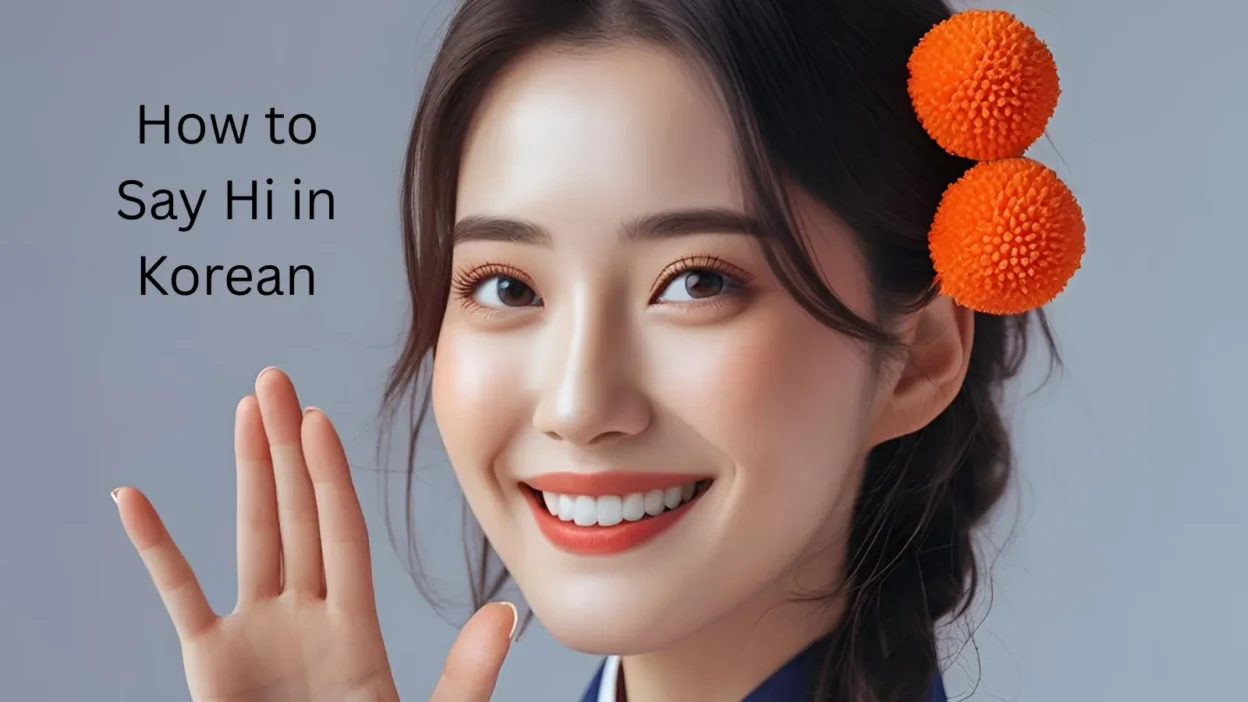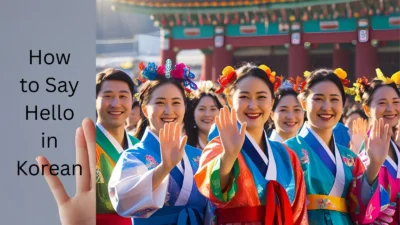Learning how to say hi in Korean is a great way to begin your journey into Korean language and culture. The most common and polite greeting is “안녕하세요” (Annyeonghaseyo), which works in most social situations.
In this guide, you’ll explore 15 different Korean greetings — from casual to formal — with clear examples and usage tips. Whether you’re talking to friends, elders, or coworkers, you’ll know exactly how to say hi in Korean the right way! 🇰🇷👋
Korean greetings reflect respect, age, and social status, so choosing the right one matters.
We’ll also explain when and how to use each greeting naturally in everyday conversation.
By the end, you’ll feel more confident starting conversations in Korean — and making a great first impression!
1. 안녕하세요 (Annyeonghaseyo) – “Hello” (formal)
Origin:
The most commonly used polite greeting in Korean, used in most social settings. It’s the standard for speaking to strangers, elders, or in public places.
Example:
👤 User A: 안녕하세요! 오랜만이에요.
👤 User B: 안녕하세요! 잘 지냈어요?
Use: Polite/formal; suitable for most situations.
2. 안녕 (Annyeong) – “Hi” or “Bye” (casual)

Origin:
Short form of “안녕하세요”, this is a casual greeting used among friends, kids, or peers of the same age.
Example:
👤 User A: 안녕! 오늘 뭐 해?
👤 User B: 안녕~ 영화 보러 갈 거야!
Use: Informal; among close friends or children.
3. 안녕하십니까 (Annyeonghasimnikka) – “Good day” (very formal)
Origin:
The ultra-formal version of “hello,” often heard in news broadcasts, formal announcements, or military and corporate environments.
Example:
👤 User A: 안녕하십니까. 회의에 오신 걸 환영합니다.
👤 User B: 감사합니다. 초대해 주셔서 기쁩니다.
Use: Very formal or professional environments.
4. 여보세요 (Yeoboseyo) – “Hello?” (on the phone)
Origin:
Exclusively used for answering phone calls. It’s not used in face-to-face interactions.
Example:
👤 User A: 여보세요? 누구세요?
👤 User B: 안녕하세요. 택배 기사입니다.
Use: Only when answering the phone.
5. 잘 지냈어요? (Jal jinaesseoyo?) – “Have you been well?”
Origin:
While not a direct “hi,” it’s a warm follow-up greeting, often used after 안녕하세요 when meeting someone again.
Example:
👤 User A: 안녕하세요! 잘 지냈어요?
👤 User B: 네, 덕분에요. 잘 지내셨어요?
Use: Polite; great for reunions.
6. 오랜만이에요 (Oraenmanieyo) – “Long time no see”

Origin:
Common greeting when meeting someone after a long time. Emphasizes emotional connection.
Example:
👤 User A: 오랜만이에요! 보고 싶었어요.
👤 User B: 그러게요! 진짜 오랜만이에요.
Use: Polite and warm; used in reunions.
7. 잘 있었어? (Jal isseosseo?) – “How have you been?” (casual)
Origin:
Casual version of 잘 지냈어요?, used among friends or people your age.
Example:
👤 User A: 야, 잘 있었어?
👤 User B: 응! 너는?
Use: Informal; among close friends.
8. 하이 (Hai) – “Hi” (Konglish)
Origin:
Borrowed from English, “하이” is a trendy and playful greeting used among young people.
Example:
👤 User A: 하이~ 오늘 어때?
👤 User B: 굿굿~ 넌?
Use: Very casual, playful.
9. 반가워요 (Bangawoyo) – “Nice to meet you” (polite)
Origin:
Used when meeting someone for the first time, often after saying hello.
Example:
👤 User A: 안녕하세요. 민수예요.
👤 User B: 반가워요! 저는 지연이에요.
Use: Polite; great for first-time meetings.
10. 반갑습니다 (Bangapseumnida) – “Nice to meet you” (formal)
Origin:
Formal version of 반가워요, used in professional or respectful settings.
Example:
👤 User A: 안녕하십니까. 처음 뵙겠습니다.
👤 User B: 반갑습니다. 만나서 반가워요.
Use: Formal; for business or polite interactions.
11. 안녕 친구야! (Annyeong chinguya!) – “Hi, friend!” (very casual)
Origin:
“Chingu” means friend; this version is common among elementary school kids or very close peers.
Example:
👤 User A: 안녕 친구야! 학교 어땠어?
👤 User B: 재밌었어! 너는?
Use: Very informal and affectionate.
12. 좋은 아침이에요 (Joeun achimieyo) – “Good morning”
Origin:
Less common in casual Korean, but used in workplaces and sometimes in text.
Example:
👤 User A: 좋은 아침이에요, 과장님.
👤 User B: 아침 일찍 일어나셨네요!
Use: Polite or formal environments.
13. 좋은 하루 되세요 (Joeun haru doeseyo) – “Have a good day”

Origin:
Not a direct “hi,” but often used as a warm greeting or farewell during the day.
Example:
👤 User A: 오늘도 화이팅! 좋은 하루 되세요~
👤 User B: 네, 고마워요! 너도요!
Use: Polite and kind; great for work or casual.
14. 안녕하십니까, 선생님 (Annyeonghasimnikka, seonsaengnim) – “Hello, teacher” (very formal)
Origin:
Adding a title like “선생님” (teacher) to a formal greeting shows high respect.
Example:
👤 User A: 안녕하십니까, 선생님. 수업 준비됐습니다.
👤 User B: 네, 반가워요. 들어오세요.
Use: Very formal; used for teachers, elders, or superiors.
15. 안녕 내 사랑 (Annyeong nae sarang) – “Hi, my love” (romantic)
Origin:
Used in romantic relationships, often in K-dramas or between couples.
Example:
👤 User A: 안녕, 내 사랑~ 보고 싶었어.
👤 User B: 나도! 안아줘!
Use: Romantic; used with a lover or spouse.
Conclusion:
👋 Now you know how to say hi in Korean using a variety of greetings that suit different people and situations. From casual expressions like “안녕” (Annyeong) to formal greetings like “안녕하십니까” (Annyeonghasimnikka), each phrase helps you show the right level of respect and friendliness.
Understanding these greetings not only improves your Korean language skills but also deepens your connection to Korean culture.
Use them with confidence when meeting friends, colleagues, or elders — and always greet with a smile! 😊
With just a few well-chosen words, you can start any conversation on the right note in Korean. 🇰🇷



